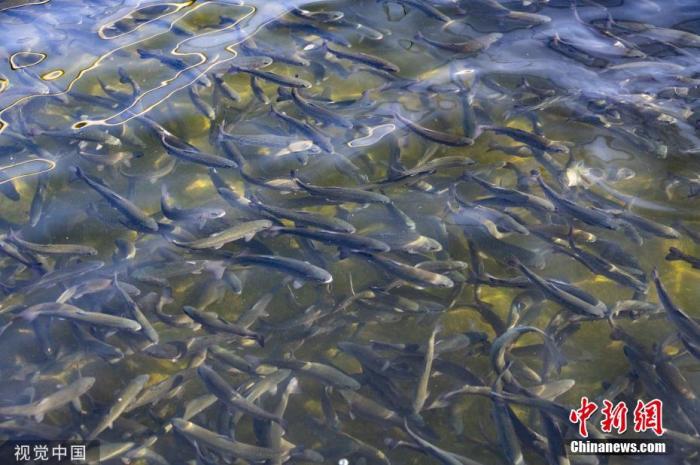China News Service, July 28. According to a report by the US Chinese website, due to the heat wave and long-term drought in the western United States, the fish in the rivers from Idaho to California are facing survival risks, especially some salmon. The population is threatened with extinction.
According to reports, due to the low water level caused by the drought, a parasite grows wildly, and hundreds of thousands of salmons in the Klamath River in Northern California are dying.
In addition, wildlife officials said that juvenile Chinook salmon in the Sacramento River "almost completely died" due to the high water temperature.
Local time on November 17, 2019, Sacramento, California, USA, a real shot of migratory salmon spawning.
Image source: Visual China
In addition to the danger of extinction of fish stocks, drought and high temperature may also cause a devastating blow to the commercial salmon fishing industry, which is worth 1.4 billion US dollars in California alone.
U.S. federal fisheries officials predicted in May that more than 80% of salmons might die due to rising water temperatures in the Sacramento River.
Now state wildlife officials say that this number may be even higher if the cold water is quickly depleted.
Federal water managers said this week that California’s largest reservoir has only about 35% of its storage capacity.
Water temperature also begins to affect older fish.
Scientists have seen some adult fish die before they lay eggs.
The western region has been struggling to cope with the historic drought.
California uses trucks to transport millions of salmon raised in hatcheries to the ocean every year, bypassing dangerous downstream rivers to protect fish populations.
State governments and federal hatcheries have adopted other unconventional measures to protect endangered salmon populations, such as establishing gene banks.
Local time on November 17, 2019, Sacramento, California, USA, a real shot of migratory salmon spawning.
Image source: Visual China
On the Klamath River near the border of Oregon, California wildlife officials decided this year not to release more than 1 million juvenile salmon into the wild, but to keep them on farms until the river conditions improve.
In other states in the western region, officials face similar concerns about fish populations.
In Idaho, wildlife experts knew that endangered sockeye salmon could not migrate upstream to their spawning habitat through hundreds of miles of warm water, so they poured cold water into the Snake River and then trucked the nets to hatch. field.
Low water levels are also affecting recreational fishing.
Officials in Wyoming, Colorado, Montana and California require anglers to fish during the coolest part of the day to minimize the impact on fish that are already deprived of oxygen.
Scientists say that historically, salmon populations in California have generally rebounded after droughts because they have evolved to tolerate a climate similar to that of the Mediterranean. However, prolonged droughts may lead to the complete extinction of certain salmon populations.

